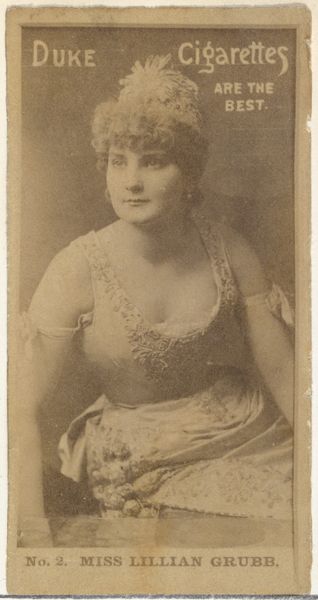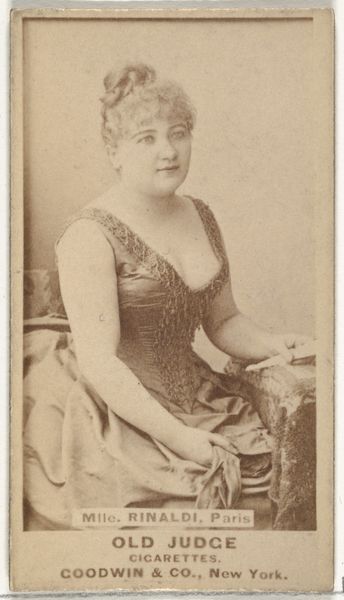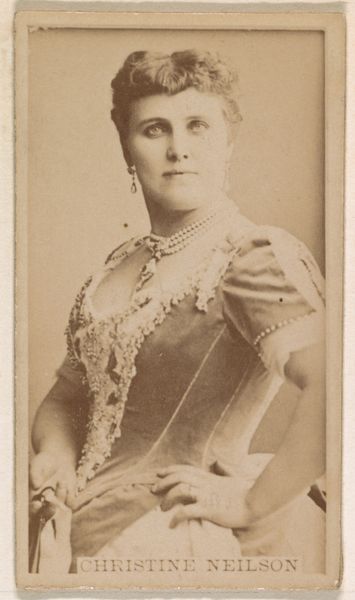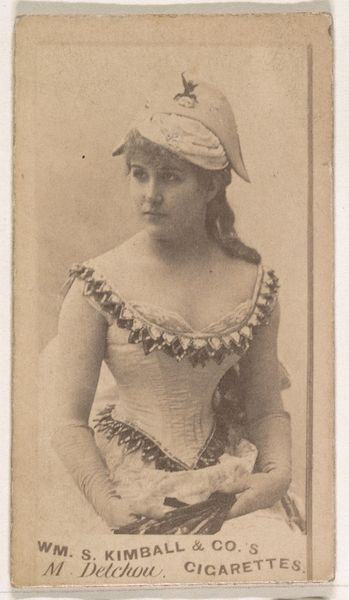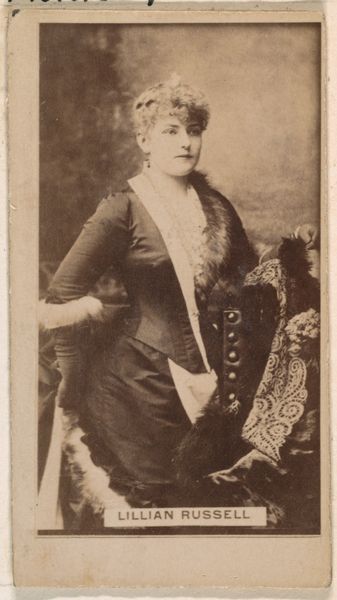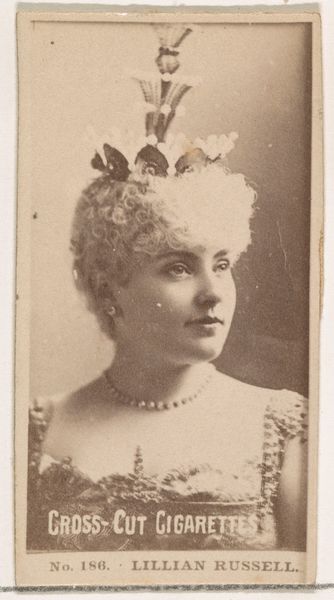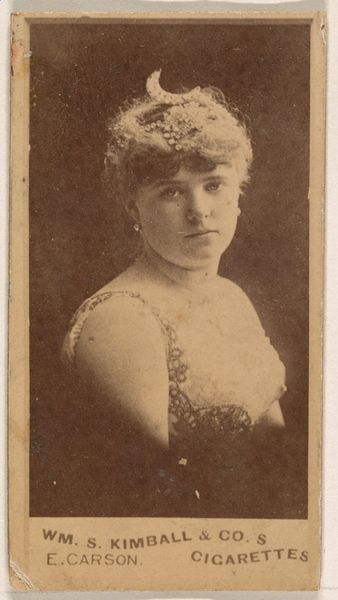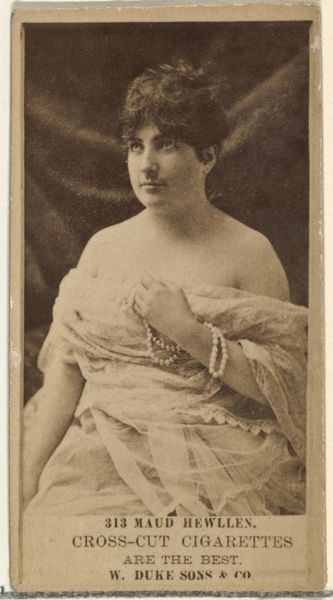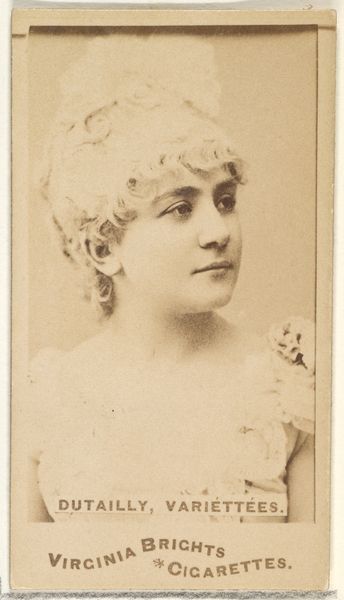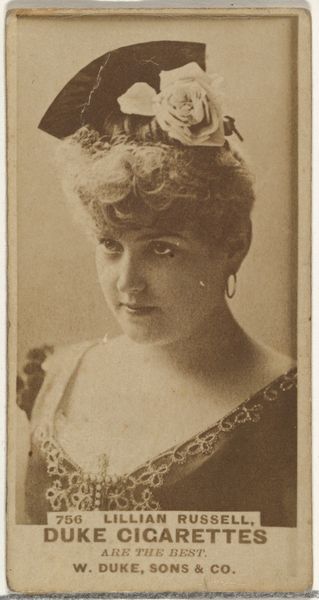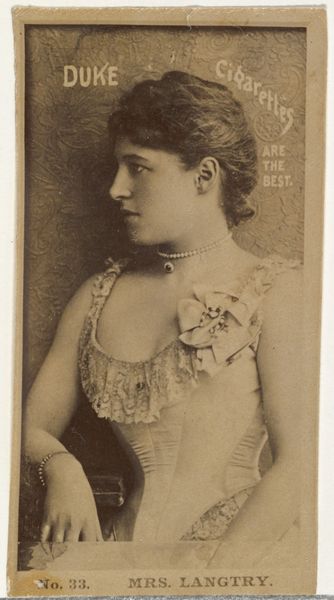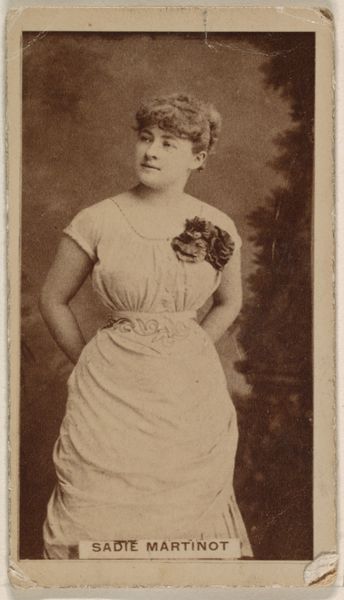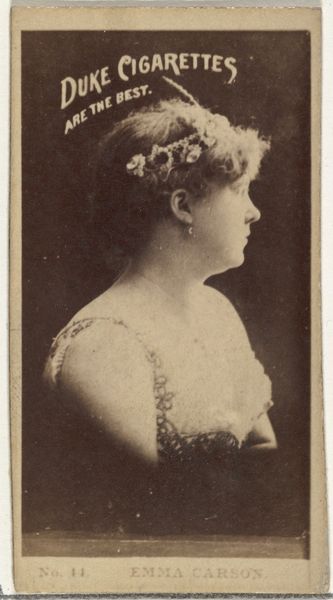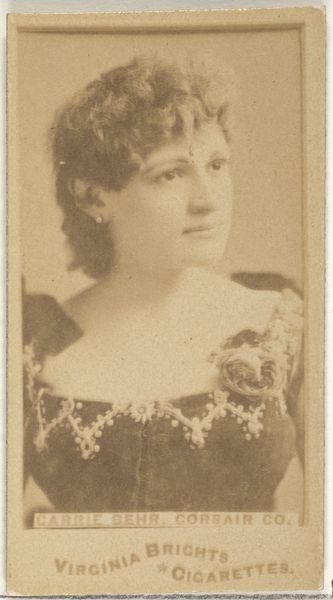
Miss Cameron, from the Actors and Actresses series (N145-7) issued by Duke Sons & Co. to promote Duke Cigarettes 1880s
0:00
0:00
drawing, print, photography
#
portrait
#
drawing
#
16_19th-century
# print
#
photography
#
19th century
Dimensions: Sheet: 2 11/16 × 1 3/8 in. (6.8 × 3.5 cm)
Copyright: Public Domain
Editor: This is a small portrait card of Miss Cameron, made by W. Duke, Sons & Co. in the 1880s, as part of a series to promote Duke Cigarettes. The drawing is also a photograph, interestingly enough. It has a sepia tone and the card format makes me think about consumer culture, even back then. What's your take? Curator: It’s fascinating how this image conflates "high" culture – the actress, portraiture – with the burgeoning mass market via the cigarette card. I focus on how the production of the card and the object itself participates in a wider system of labor, materials, and consumption. Consider the paper: its mass production relied on specific industrial processes and global trade networks. The ink, too. These weren't created in a vacuum. Editor: That's a different way of looking at it! I was caught up in the image itself. The material construction completely escaped me. It never even occurred to me that the materiality of a cigarette card is worth considering in art! Curator: The choice of printing method – a relatively new photographic process, which made reproduction easier – also suggests a drive to maximize profit, while the drawing/photography itself references popular portraiture, appealing to aspirations of wealth. How does that impact the availability and experience of “art”? Who has access? Who decides what art even *is*? Editor: So, the "artwork" here really becomes more about its function in a larger system of production and consumption, blurring the lines between art and advertising? That makes sense. The layers upon layers of capitalistic functions makes my head spin! Curator: Precisely. It pushes us to think critically about the seemingly simple objects we encounter daily. And it forces one to re-think the relationship between art, craft, labor, and capitalism. Editor: I see. Examining its production process helps decode a whole network of meaning behind something that seemed, initially, just like a pretty picture. Curator: Indeed, we must not overlook that labor is as central to a painting as it is to this cigarette card. Every image comes to being through work.
Comments
No comments
Be the first to comment and join the conversation on the ultimate creative platform.
